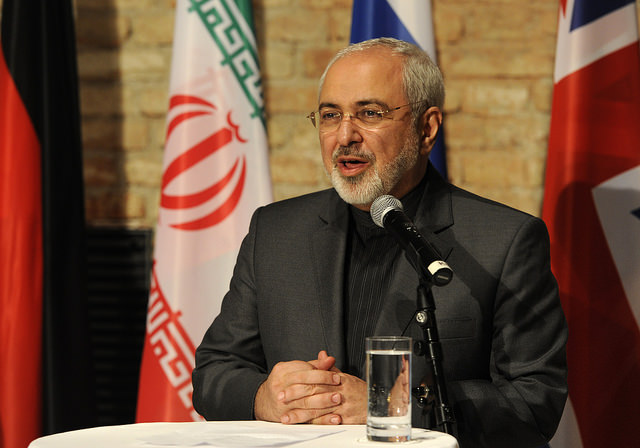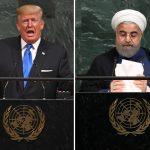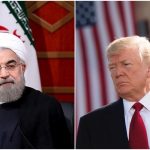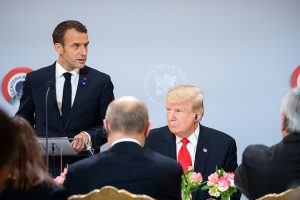by Derek Davison
With the Nov. 24 deadline looming, Iran and world powers will resume talks toward a final deal over Iran’s nuclear program this week in New York, but the gap between the two sides over the future size and scope of Iran’s uranium enrichment program seems as wide as ever. Fortunately, not every think tank in DC is focused on a military solution to this conflict. Indeed, the non-proliferation-focused Arms Control Association (ACA) has been working on a phased final deal implementation plan.
The three phases, detailed in the ACA policy brief, “A Win-Win Formula for Defining Iran’s Uranium-Enrichment Capacity,” were presented during a Sept. 15 panel discussion in Washington.
The first phase, which would last from 2015 through either 2017 or 2018, requires Iran to reduce its enrichment capacity from its current 9400 Separative Work Units (SWU) down to something in the range of 4500-5400 SWU. This would extend Iran’s “breakout time,” the length of time it would take the Iranians to produce enough highly enriched uranium to fuel one nuclear bomb, from the current (estimated) 2-3 months to 9-12. Iran would agree not to enrich any uranium beyond 5%, and would convert its stockpiles of uranium hexafluoride gas to powdered uranium oxide, which would have to be reconverted to gas (an action that would likely be detected by International Atomic Energy Agency monitors) before it could be enriched. In return, the P5+1 (US, UK, France, Russia, China and Germany) would allow Iran to continue research and development into more advanced centrifuge models than the relatively primitive IR-1 centrifuges it currently operates.
Phase II of the proposal would run from the completion of Phase I through 2021. At this point, Iran would be allowed to gradually bring its enrichment capacity back up to its current level (9400 SWU) while also swapping out its IR-1 centrifuges for more advanced IR-2 models. It could also continue researching more advanced centrifuge models, under an agreed upon capacity limit of 10 SWU per centrifuge. Iran’s stockpile of enriched uranium would still be limited, in order to keep its breakout time in the 5-6 month range. Phase III, which is envisioned to last until sometime between 2026 and 2031, would be triggered when the IAEA is able to reach a “broad certification” that Iran’s nuclear program is entirely peaceful. This phase would keep Iran’s overall capacity at 9400 SWU but would allow Iran to begin producing advanced centrifuges in anticipation of scaling up that capacity upon the completion of that phase.
The ACA’s compromise hinges on both sides coming to some reasonable agreement with respect to Iran’s “practical needs,” a standard that was included but not defined in the text of last year’s interim Joint Plan of Action. But as noted by panelist Paul Pillar, a 28-year veteran of the CIA who has written extensively about the conflict over Iran’s nuclear program, the Iranians and the P5+1 have not been able to reach a mutual definition. Right now, Iran has a deal with Russia to supply fuel for its Bushehr nuclear plant. As far as the P5+1 is concerned, this reduces Iran’s immediate practical enrichment needs to almost nothing, but the Iranians, who have recent history on their side, are unwilling to leave their nuclear program at the mercy of a potentially unreliable foreign fuel supplier. They argue that they have a short-term practical need to fuel their current and planned future reactors with domestically enriched uranium.
Pillar also pointed out that the Iranians believe they have shown far more flexibility and willingness to compromise than the P5+1, which puts the degree to which they will be amenable to further compromise on the issue of their practical needs in question. The Iranians have consistently chafed at what they perceive as a double standard, whereby their nuclear program, which they have always insisted is peaceful, is subject to significantly greater scrutiny and limitations than countries that have actually implemented military nuclear programs, like Pakistan and India. Accordingly, Iran may reject additional compromises that reinforce that double standard.
Despite this structural obstacle, the ACA panel seemed optimistic that the two sides would find enough common ground to reach a final deal. The nuclear security expert Jim Walsh pointed to the considerable progress that has been made so far on other potential complications like Iran’s Arak heavy water reactor and the status of the Fordow enrichment facility. When it comes to enrichment, Walsh argued that the P5+1 need to reduce its “misguided” emphasis on numbers—i.e., overall capacity and breakout time—and instead look at the potential political ramifications of a deal that could reincorporate Iran into the international community and support the political ascendance of Iranian political moderates over hard-liners. Pillar noted that the outcome of these talks will likely determine Rouhani’s political future, but suggested that Iran is not desperate for a final deal. He rightly noted that the Iranian government’s receptiveness will ultimately depend on how the deal balances sanctions relief against Iran’s stated principles and requirements.






Hasn’t Iran already reduced its uranium supply to 5%, moving to the oxide phase, which has been verified by the IAEA? Also, why so long an agreement in time? The so called break-out figure[s], really seem arbitrary, considering that only idiots would try to make a bomb with only the supply for 1. What about the sanctions, when do those get removed, or are they stuck until 2031 or beyond?
On another note, when are the powers to be going to quit playing the game of refusing to tackle the issue of Israels stockpile of Nuclear bombs and eliminating them? Considering that Israel has disregarded its obligations concerning the West Bank, engaging in the land grab instead, including the treatment of the Palestinian population as second class people, not to forget what the latest treatment that Gaza has been dealt, can they even be trusted not to launch a first strike campaign against any country in the world, including the U.S.A.?
I believe that even the so-called nuts that now have the bomb[s] also realize that to use 1 or more, that the retaliation would be swift and would probably turn its county into a smoldering pile of ashes.
Couldn’t agree more Norman, not to mention the “Human Rights” BS which while important, again emphasizes to Iranians the US’s hypocrisy. The biggest human right violators in the region are all important US allies n literally get away with murder and torcher without any condemnation. In fact their buddy Bahrain is hosting a meeting on how to stop the financing of ISIL..!! R they kidding?! Is the irony really that lost on them?!